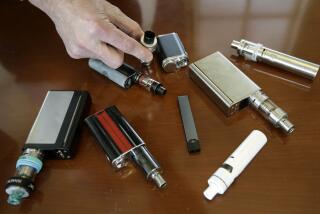A troubling trend in teens drinking hand sanitizer
Six teenagers have shown up in two San Fernando Valley emergency rooms in the last few months with alcohol poisoning after drinking hand sanitizer, worrying public health officials who say the cases could signal a dangerous trend.
Some of the teenagers used salt to separate the alcohol from the sanitizer, making a potent drink that is similar to a shot of hard liquor.
“All it takes is just a few swallows and you have a drunk teenager,” said Cyrus Rangan, director of the toxicology bureau for the county public health department and a medical toxicology consultant for Children’s Hospital Los Angeles. “There is no question that it is dangerous.”
Although there have been only a handful of cases, Rangan said the practice could easily become a larger problem. Bottles of hand sanitizer are inexpensive and accessible, and teenagers can find distillation instructions on the Internet.
“It is kind of scary that they go to that extent to get a shot of essentially hard liquor,” Rangan said.
In addition to the teenagers who intentionally drank the sanitizer, younger children also have accidentally ingested it in the past.
The liquid hand sanitizer is 62% ethyl alcohol and makes a 120-proof liquid. A few drinks can cause a person’s speech to slur and stomach to burn, and make people so drunk that they have to be monitored in the emergency room.
Doctors said this is the latest over-the-counter product that teenagers have adapted for a quick high. Teenagers have done the same with mouthwash, cough syrup and even vanilla extract.
“Over the years, they have ingested all sorts of things,” said Helen Arbogast, injury prevention coordinator in the trauma program at Children’s Hospital Los Angeles. “Cough syrup had reached a very sexy point where young people were using it.... We want to be sure this doesn’t take on the same trend.”
The recent cases involving teenagers surprised doctors. There were no such cases last year. The incidents also raised concerns about the lack of awareness among parents of the risks linked to the popular hygiene product. Even small bottles contain highly concentrated alcohol.
If parents buy hand sanitizer, they should purchase the foam version rather than the gel type because it is harder to extract the alcohol and teenagers may be less likely to drink it, Arbogast said.
Parents also shouldn’t leave hand sanitizer around the house and should monitor it like any other liquor or medicine. They should also watch for signs of intoxication, she said.
“When young people are actively and purposely ingesting it, that is when it becomes a real concern,” she said.






